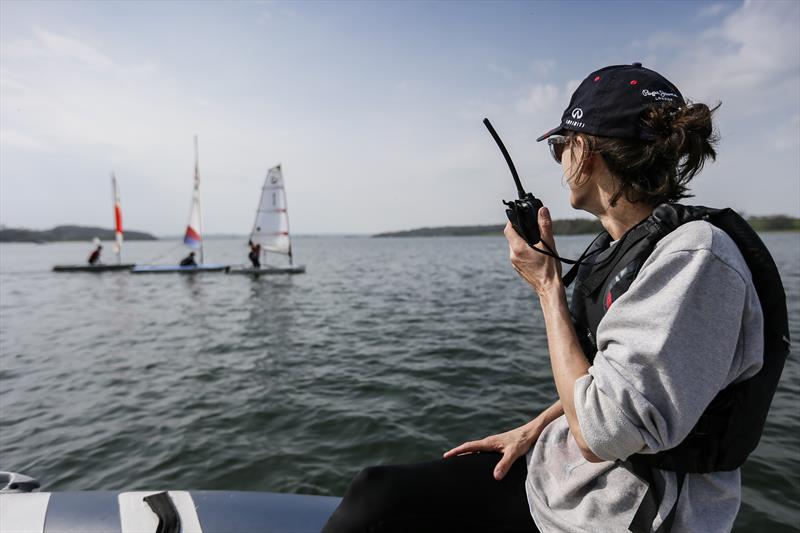
Marine VHF Radio: Q&A with Icom's Ian Lockyer
by Mark Jardine & Ian Lockyer 7 Jul 2020 12:00 BST

VHF Radio Advice For RYA Onboard Trainers © Paul Wyeth / RYA
We spoke to Icom Marine's Ian Lockyer to find out a more about Marine VHF Radio including how to get a licence, what to do in an emergency and what the M1 and M2 channels are.
Marine VHF Radio Licence: How do I go about getting qualified?
All marine VHF users should be suitably qualified/licenced and have passed the RYA Marine Radio Short Range Certificate (SRC) course which is run at many sailing clubs, water sports centres and colleges in the UK. The SRC is the minimum qualification required to operate marine VHF radio equipment on a UK flagged vessel. This includes both fixed and handheld equipment with and without Digital Selective Calling (DSC).
The SRC course may be taken in a classroom or online through an RYA Recognised Training Centre. The exam is a combination of a written theory test and practical assessment in the use of Marine VHF DSC radios. Candidates must be 16 years or older on the day of the exam.
For more information, visit the following dedicated page on the RYA website: RYA Marine Radio Short Range Certificate.
Channel 16 - What do I do in an emergency?
Channel 16 (The Calling and Emergency Channel) should be monitored in an emergency and as much as possible the channel should be kept clear for emergency responses and co-ordination.
A distress call is the most serious level of emergency. It applies to any situation where a person is threatened by grave and imminent danger and requires immediate assistance.
When using your marine VHF radio to make a distress call you must prefix the call with 'Mayday' so that we can identify it as an emergency call for help. A distress call has priority over all other transmissions.
A mayday call should be sent on Channel 16. On completion of the distress call, release the transmit button and listen. If you do not receive an acknowledgement after approximately one minute, check the VHF set and repeat your distress call.
If you hear a distress call on your VHF radio, write down the details. If you can help you should acknowledge accordingly, but only after giving an opportunity for the Coastguard station or some larger vessels to do so.
What are Marine Channels M1 & M2?
Channel M1 (37A) and M2 (P4) are the designated club and marina use channels for leisure users.
UK Marina Channels: M1=37A (157.850 MHz), M2=P4 (161.425 MHz)
All Icom marine VHF radios purchased from authorised Icom UK dealers within the UK and Southern Ireland have these channels as standard. Be aware that products sourced from overseas markets including other parts of Europe are unlikely to have these channels enabled.
Find out more about Icom's range of Marine VHF Radios at icomuk.co.uk